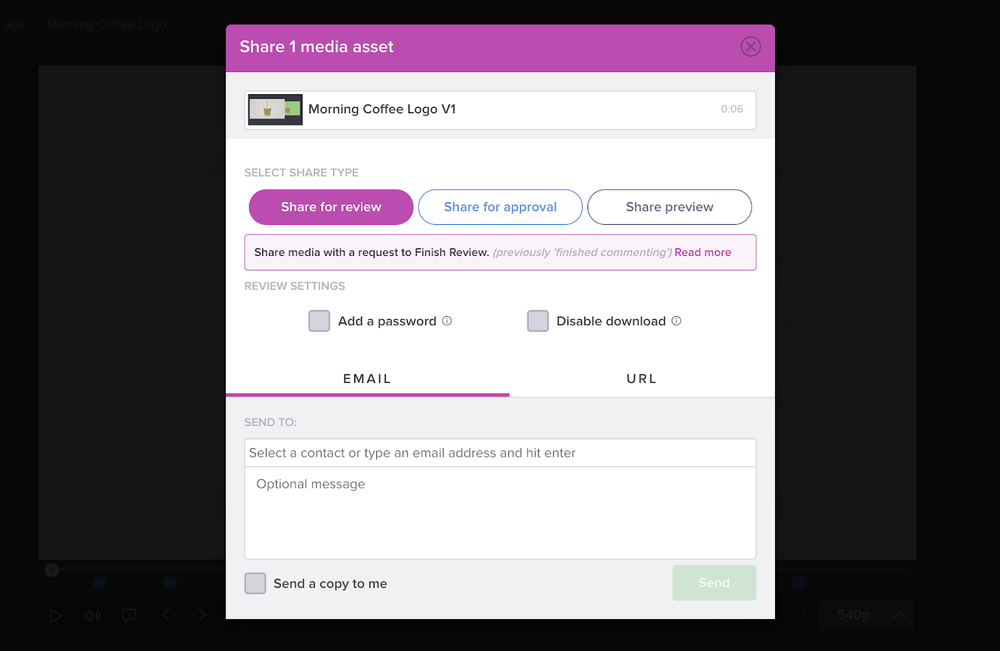
Imagine managing a project and never running into snags or roadblocks — everyone takes ownership of their roles and every process runs smoothly all the way up to the finish line. Such a world exists! Teaming up with our friends at Wipster, we’re bringing you three important tips for streamlining communication and collaboration.
Just like how we know how to support our clients find music for videos, our friends at Wipster know a thing or two about getting everyone on the same page. Here are their three tips for working with clients on video and creative projects.
Every filmmaker strives to make their videos both creative and unique while also fulfilling the business goals of their client. The balance, however, between creativity and goals can be a fine line to walk when there are many cooks in the kitchen. So what are the best ways to set up your video for the ultimate success without losing your creative touch?
Let’s dive into the three ways to best manage your communication with your clients so everyone is happy!
The Creative Brief and Pitch Deck
When your client comes to you with a project idea, it’s best to work with a representative from your client’s organization to draft a creative brief. A creative brief should include these three core components: the target audience, call-to-action, an overview of the video’s goals and objectives, and the production schedule or any hard deadlines.
The creative brief then becomes the backbone of the project and the starting point from which you can make your pitch deck.
A comhttps://wipster.io/blog-for-creative-teams-who-want-better-collaboration-tools/how-to-pitch-a-video-concept-your-client-will-lovepelling pitch deck should include the following:
-
An intriguing tagline the summarize the video (this is also known as a log line)
-
The Technical Style: How will the video be made? In what style? Animation? Live Action?
-
Voiceover Script (if any)
-
Reference and/or Inspiration videos and music
-
And mood images
Pro Tip: Include musical links or samples in your brief as well! Music is such a key component for the mood of your project and it will help your client understand the tone of the video.
Once the client approves the pitch deck, then formalize the agreement.
Formalize the Agreement
If you’re a freelance or agency, I’d highly recommend creating an agreement template that includes the production fee, deadline, and has your creative brief and pitch deck attached to it.
Before the agreement is signed, it’s important to make sure all stakeholders approve the brief and the pitch deck. This means asking your client, “who is the person at the top of your organization that must approve the video before it goes out?” Make sure their bosses’ boss is involved so that way there are no surprises when the final edited video reaches their desk for approval.
Of course, as production carries on things might shift or change slightly in the production. That’s the nature of production! But at least you can use the agreement as leverage to go back to hold both yourself and the client accountable.
In your agreement you can list out the number of feedback cycles included in the cost production. Typically two rounds of edits is the norm unless there are any outstanding typos.
Then send it out for signature!
Use Wipster for Review and Approval

Once your video is ready for review, there are a lot of ways to share with your team for feedback. If ever in the face of a tight deadline or pesky varying timezones, getting quick revision notes can seem challenging. But the workflow can keep flowing even in the collaborative process when using Wipster to send your video for feedback.
The creative feedback and collaboration features of Wipster allow your client to leave secure and private notes directly on the video, rather than feedback via an email chain which usually consists of a list of time-coded comments.
From Wipster, you will get notified when your client has viewed and finished commenting on the video, making the process seamless. And all feedback will be time-coded and nicely fit into one place.

Pro Tip: Before you send your client a Wipster link to review remember to inform them what Wipster is — so they understand what the tool is for. Remember, no surprises!
You can also send your client this list on how to give constructive feedback. More communication is better than none! Keeping everyone on the same page will not only ensure that your project succeeds, but also make your video client happy.
Once the video is approved, Wipster can also be the file delivery method. You can enable the client to download the original and approved video file.
The Wipster team is constantly working to improve feedback loops. If you’re interested in trying it out, sign up for a 14-day free trial. Happy video making!
